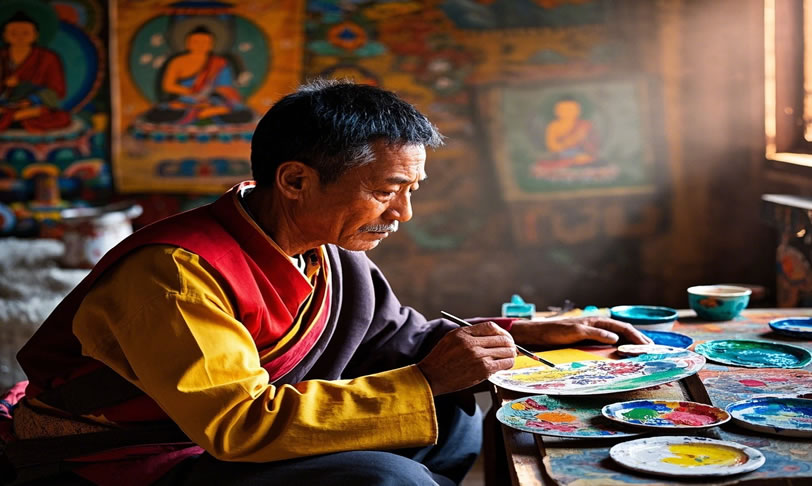Thangka Painting
Thangka painting is a highly distinctive traditional art form in Tibetan culture, with a history of more than 1,300 years. It has a rich and diverse range of themes, mainly focusing on religious content, such as the images of Buddhas, Bodhisattvas, and Dharma protectors. At the same time, it also encompasses Tibetan history, astronomical calendars, and medical knowledge, and is thus praised as the "encyclopedia of the Tibetan people".

The process of painting a thangka is very rigorous. Artists must follow the standards of the *Canon of Buddhist Image Measurement*. First, they sketch the outline, and then they use mineral pigments to color it. These mineral pigments are derived from natural materials such as gold, silver, cinnabar, etc., and they are bright in color and can be preserved for a long time. Among the painting steps, "opening the eyes" is the most crucial. The artist will hold a special ceremony to endow the thangka with a sacred vitality.
The composition of a thangka adopts a mandala layout and uses symbolic colors. For example, red represents compassion, and white symbolizes wisdom. It is not only an important auxiliary tool for religious practice but also a precious carrier of the Tibetan spiritual culture. In 2006, thangka was included in the National Intangible Cultural Heritage List.


